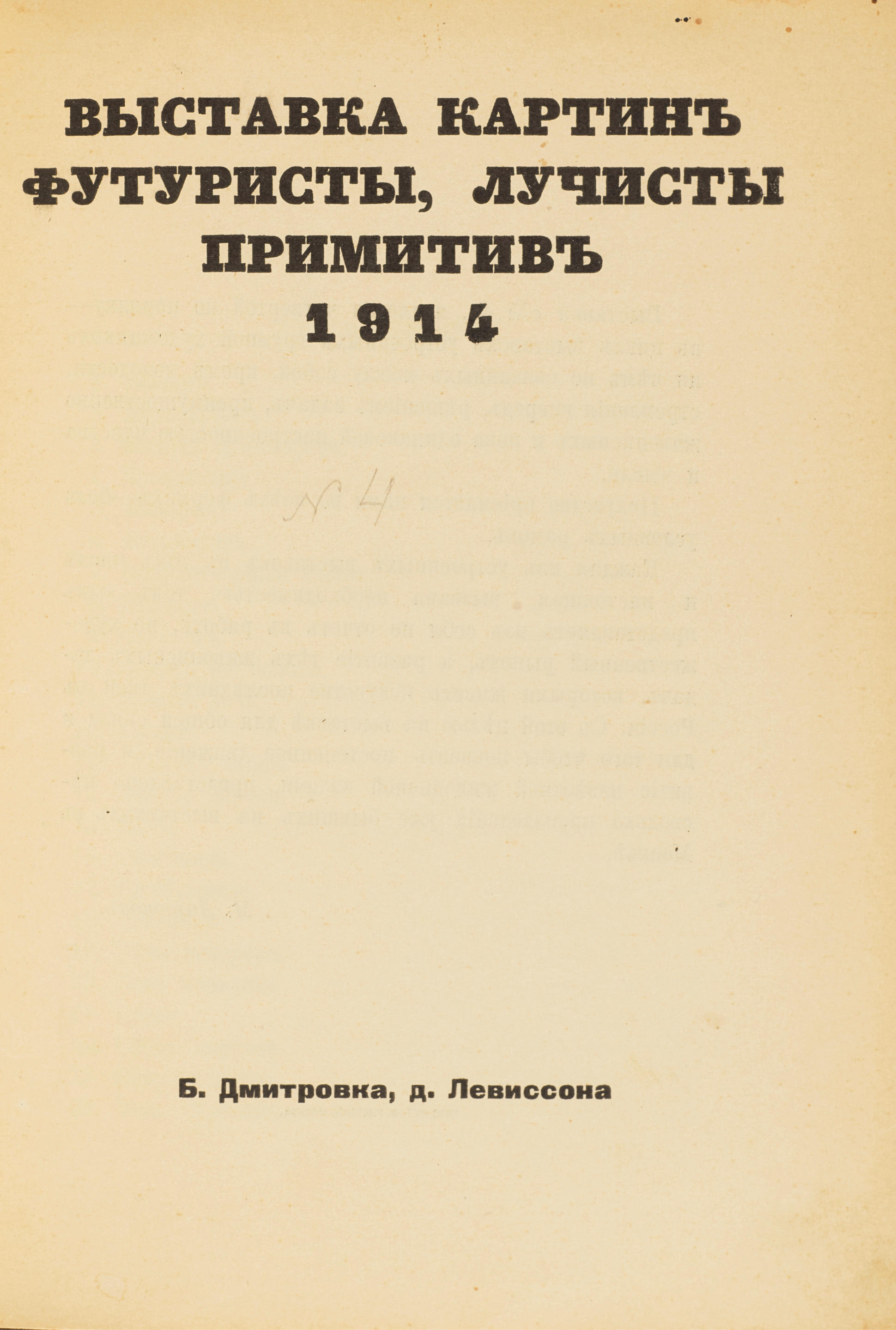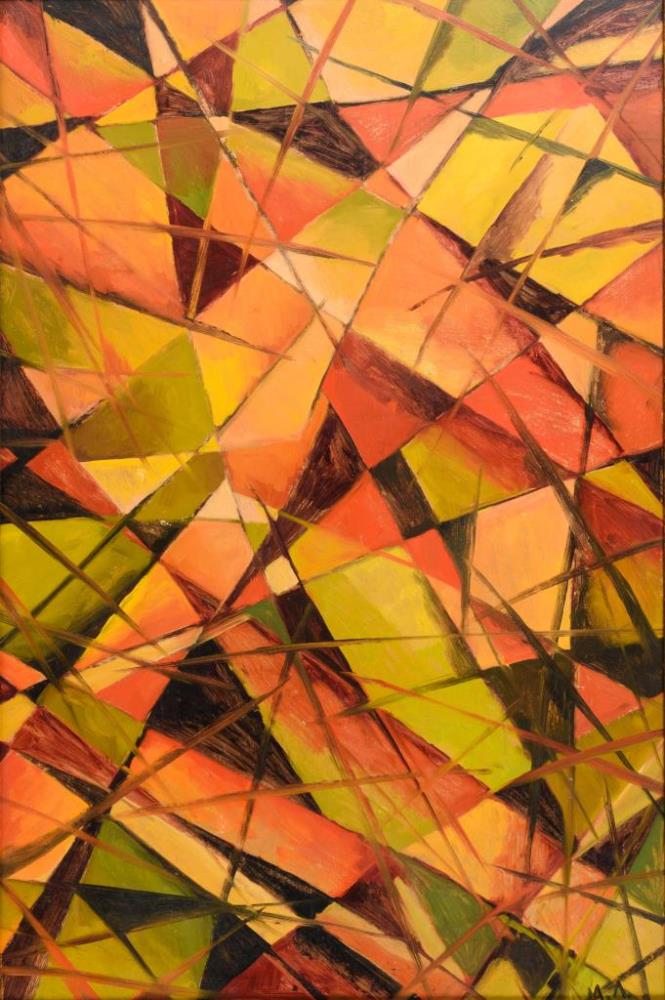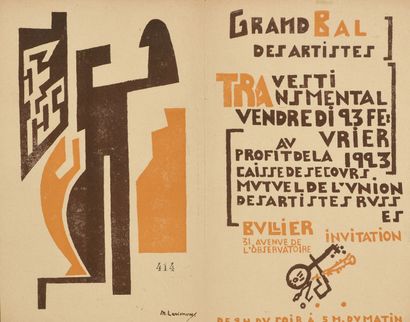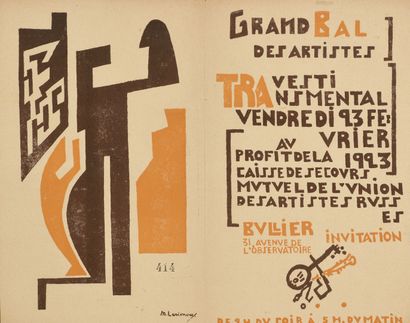Une journée de mai
Provenance: The Everest Collection, Lausanne (label on the reverse). Private collection, Europe. Exhibited: Michel Larionov , Musee des Beaux-Arts, Lyon, 17 March–15 May 1967, No. 25 (label on the reverse). Michel Larionov , Acquavella Galleries, New York, 22 April–24 May 1969, No. 11 (label on the reverse). Rétrospective Larionov–Goncharova , Musee d’Ixelles, Brussels, 29 April–6 June 1976, No. 13 (label on the reverse). Literature: Exhibition catalogue, Michel Larionov , Lyon, Musee des Beaux-Arts, 1967, No. 25, listed. Exhibition catalogue, Michel Larionov , New York, Acquavella Galleries, 1969, No. 11, illustrated and listed. Exhibition catalogue, Rétrospective Larionov–Goncharova , Brussels, Musee d’Ixelles, 1976, No. 13, illustrated. Une journée de mai is one of the masterpieces from Mikhail Larionov’s early period. Painted with amazing purity and clarity of manner, it belongs to the artist’s best canvasses from the middle of the first decade of the 20th century, which are rare even in museums. Few of his paintings from this period, as distinct from his pastels and gouaches, have been preserved. Accordingly, each of them is especially valuable. The artist painted Une journée de mai in 1904 after being sent down for a year from the Moscow School of Painting, Sculpture and Architecture for showing works in the pupils’ exhibition that were “indecent in content”. Over this time spent away from classroom study Larionov, enthralled by the Impressionists he saw in the Moscow collection of I. Shchukin, really began to feel his independence as a painter, and free of academic didacticism. Each summer he set off from Moscow to Tiraspol, to the house of his maternal grandmother where he had spent his childhood. There he would devote himself entirely to works drawn from nature. It is truly impossible to overestimate the importance of these to the story of the artist’s career. Taking over a wing of his grandmother’s house, with its extensive orchard of apricot trees, and converting it into his studio, Larionov created a series of canvasses extolling the everyday life that was going on outside his window. Flowers in pots, lilac bushes, geese and turkeys strutting round the yard became the motifs in his best work of the first five years of the century. Although stylistically most of these pieces, Une journée de mai included, still resemble his early work, in which the influences of Victor Borisov- Musatov and a naturalistic approach to depicting the world still pervade, we are no longer looking at studies as they were understood in 19th century art, but at pictures painted from life that entirely belong to the new century. His conservatories, acacias, roses wet with rain, and even his pigs literally grow out of a study into a self-sufficient composition, even preserving the typically small dimensions of a study and the spontaneous elan with which the paint is applied. It is difficult to find a better example than Une journée de mai of how genres were deliberately mixed. This device became a special characteristic of Larionov’s painting in the first decade of the 20th century. At this time he crosses over from painting still lifes to depicting interiors. These, in turn, are united through open doors and windows with the landscape of garden and street. In its compositional structure, Une journée de mai harks back to Velazquez’s Las Meninas , in which the optical centre of the picture is a mirror reflecting the royal couple Philip IV and Mariana of Austria and in the doorway next to them the figure of Chancellor Olivares. But if in Velazquez this motif is only part of a composition that is, as a whole, much more complex, then in Larionov’s case the borders of window, mirror and real space in combination become sufficient on their own. Their fragmentary nature and juxtaposition generate expression. The feeling is engendered of a wholeness about the world, parts of which are represented by the branches of trees outside the window, the flower
Une journée de mai
Provenance: The Everest Collection, Lausanne (label on the reverse). Private collection, Europe. Exhibited: Michel Larionov , Musee des Beaux-Arts, Lyon, 17 March–15 May 1967, No. 25 (label on the reverse). Michel Larionov , Acquavella Galleries, New York, 22 April–24 May 1969, No. 11 (label on the reverse). Rétrospective Larionov–Goncharova , Musee d’Ixelles, Brussels, 29 April–6 June 1976, No. 13 (label on the reverse). Literature: Exhibition catalogue, Michel Larionov , Lyon, Musee des Beaux-Arts, 1967, No. 25, listed. Exhibition catalogue, Michel Larionov , New York, Acquavella Galleries, 1969, No. 11, illustrated and listed. Exhibition catalogue, Rétrospective Larionov–Goncharova , Brussels, Musee d’Ixelles, 1976, No. 13, illustrated. Une journée de mai is one of the masterpieces from Mikhail Larionov’s early period. Painted with amazing purity and clarity of manner, it belongs to the artist’s best canvasses from the middle of the first decade of the 20th century, which are rare even in museums. Few of his paintings from this period, as distinct from his pastels and gouaches, have been preserved. Accordingly, each of them is especially valuable. The artist painted Une journée de mai in 1904 after being sent down for a year from the Moscow School of Painting, Sculpture and Architecture for showing works in the pupils’ exhibition that were “indecent in content”. Over this time spent away from classroom study Larionov, enthralled by the Impressionists he saw in the Moscow collection of I. Shchukin, really began to feel his independence as a painter, and free of academic didacticism. Each summer he set off from Moscow to Tiraspol, to the house of his maternal grandmother where he had spent his childhood. There he would devote himself entirely to works drawn from nature. It is truly impossible to overestimate the importance of these to the story of the artist’s career. Taking over a wing of his grandmother’s house, with its extensive orchard of apricot trees, and converting it into his studio, Larionov created a series of canvasses extolling the everyday life that was going on outside his window. Flowers in pots, lilac bushes, geese and turkeys strutting round the yard became the motifs in his best work of the first five years of the century. Although stylistically most of these pieces, Une journée de mai included, still resemble his early work, in which the influences of Victor Borisov- Musatov and a naturalistic approach to depicting the world still pervade, we are no longer looking at studies as they were understood in 19th century art, but at pictures painted from life that entirely belong to the new century. His conservatories, acacias, roses wet with rain, and even his pigs literally grow out of a study into a self-sufficient composition, even preserving the typically small dimensions of a study and the spontaneous elan with which the paint is applied. It is difficult to find a better example than Une journée de mai of how genres were deliberately mixed. This device became a special characteristic of Larionov’s painting in the first decade of the 20th century. At this time he crosses over from painting still lifes to depicting interiors. These, in turn, are united through open doors and windows with the landscape of garden and street. In its compositional structure, Une journée de mai harks back to Velazquez’s Las Meninas , in which the optical centre of the picture is a mirror reflecting the royal couple Philip IV and Mariana of Austria and in the doorway next to them the figure of Chancellor Olivares. But if in Velazquez this motif is only part of a composition that is, as a whole, much more complex, then in Larionov’s case the borders of window, mirror and real space in combination become sufficient on their own. Their fragmentary nature and juxtaposition generate expression. The feeling is engendered of a wholeness about the world, parts of which are represented by the branches of trees outside the window, the flower















Testen Sie LotSearch und seine Premium-Features 7 Tage - ohne Kosten!
Lassen Sie sich automatisch über neue Objekte in kommenden Auktionen benachrichtigen.
Suchauftrag anlegen